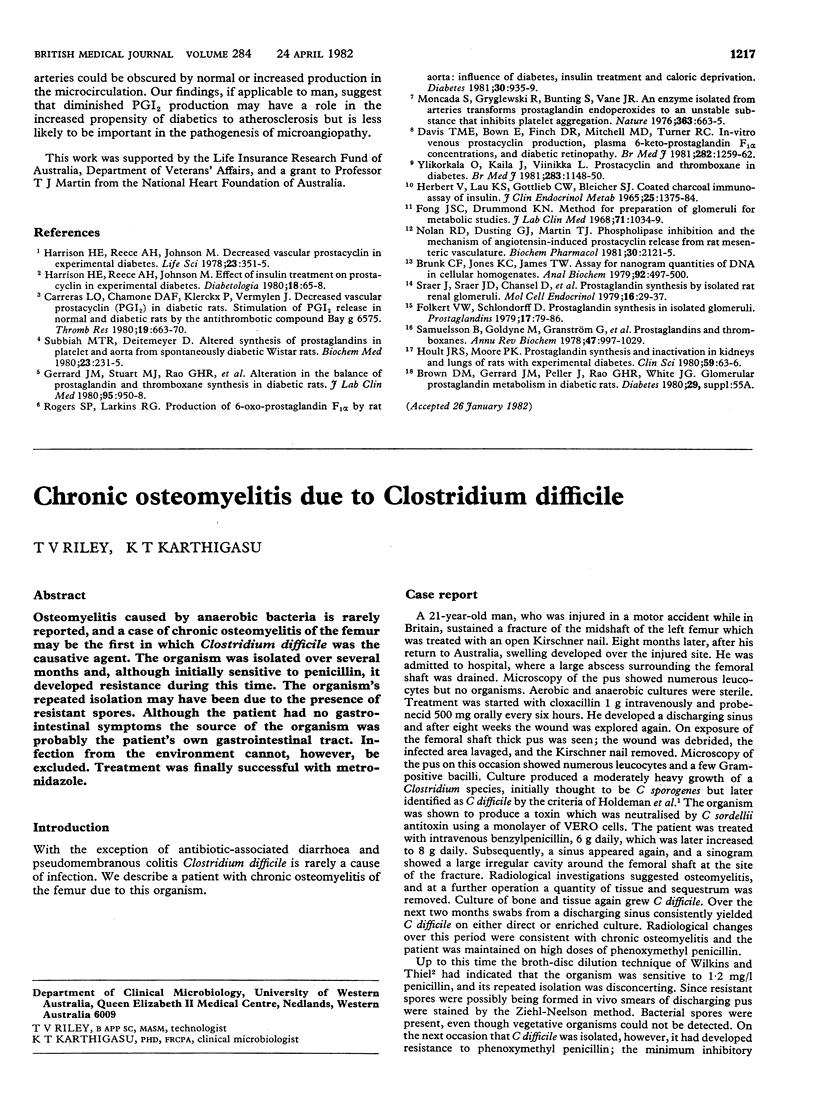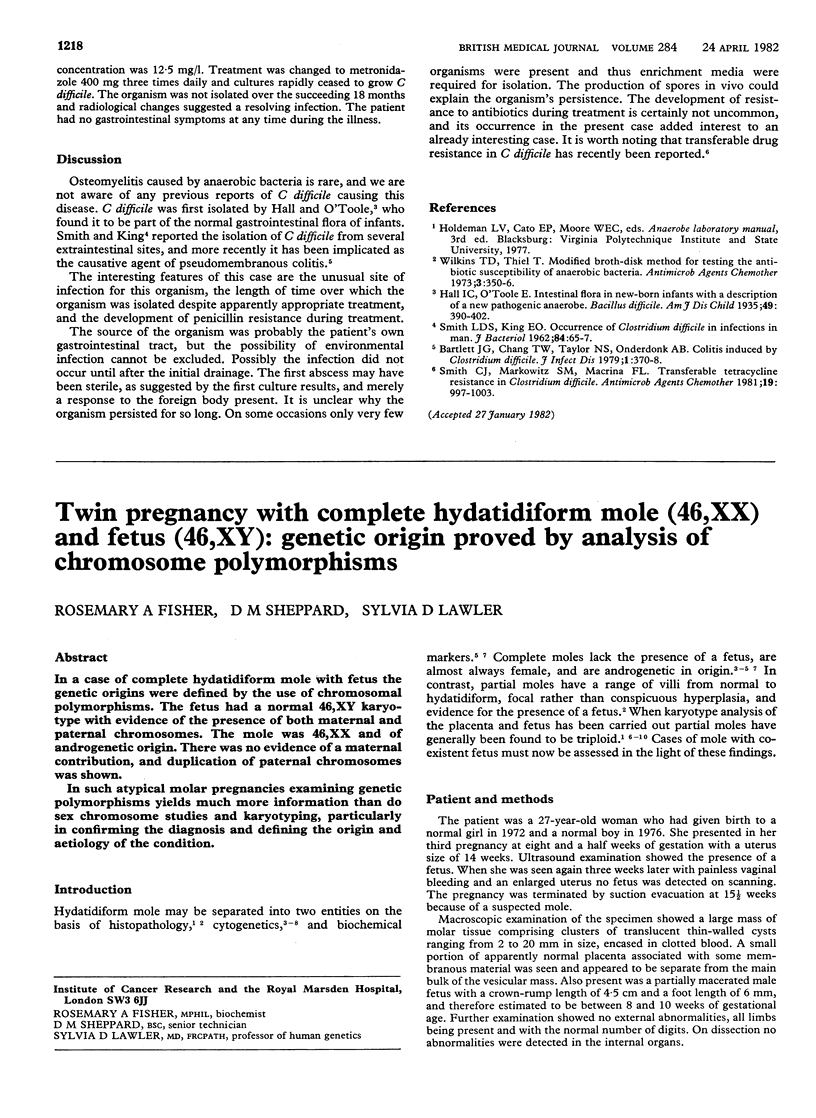Abstract
Osteomyelitis caused by anaerobic bacteria is rarely reported, and a case of chronic osteomyelitis of the femur may be the first in which Clostridium difficile was the causative agent. The organism was isolated over several months and, although initially sensitive to penicillin, it developed resistance during this time. The organism's repeated isolation may have been due to the presence of resistant spores. Although the patient had no gastrointestinal symptoms the source of the organism was probably the patient's own gastrointestinal tract. Infection from the environment cannot, however, be excluded. Treatment was finally successful with metronidazole.
Full text
PDF

Selected References
These references are in PubMed. This may not be the complete list of references from this article.
- Bartlett J. G., Chang T., Taylor N. S., Onderdonk A. B. Colitis induced by Clostridium difficile. Rev Infect Dis. 1979 Mar-Apr;1(2):370–378. doi: 10.1093/clinids/1.2.370. [DOI] [PubMed] [Google Scholar]
- SMITH L. D., KING E. O. Occurrence of Clostridium difficile in infections of man. J Bacteriol. 1962 Jul;84:65–67. doi: 10.1128/jb.84.1.65-67.1962. [DOI] [PMC free article] [PubMed] [Google Scholar]
- Smith C. J., Markowitz S. M., Macrina F. L. Transferable tetracycline resistance in Clostridium difficile. Antimicrob Agents Chemother. 1981 Jun;19(6):997–1003. doi: 10.1128/aac.19.6.997. [DOI] [PMC free article] [PubMed] [Google Scholar]
- Wilkins T. D., Thiel T. Modified broth-disk method for testing the antibiotic susceptibility of anaerobic bacteria. Antimicrob Agents Chemother. 1973 Mar;3(3):350–356. doi: 10.1128/aac.3.3.350. [DOI] [PMC free article] [PubMed] [Google Scholar]


